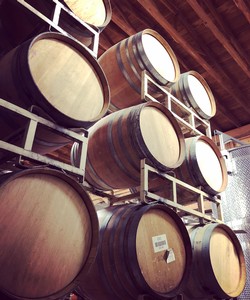What Is Malolactic Fermentation?
There are a lot of wine terms that get thrown around in the wine world that can be quite overwhelming. One of those terms is malolactic fermentation. At the risk of taking you back to high school chemistry and biology class, I want to take a moment to explain malolactic and why it is important in winemaking.
First off, there are typically two fermentations that a wine can undergo. Primary fermentation is the yeast turning sugar to alcohol (personally this is my favorite) and secondary fermentation which is malolactic fermentation. Malolactic fermentation is performed by lactic acid bacteria that can use malic acid as a food source. During the fermentation the bacteria turn malic acid, a sharp acid, into lactic acid (a softer acid). Malic acid is the same acid found in foods like granny smith apples which is why they are so tart and sharp. Conversely, lactic acid is often found in milk in the form of lactate which is typically mild.
So why do we undergo malolactic fermentation in wine? There are several reasons, which include softening of the acidity, microbial stability, and flavor development. Most red wines undergo malolactic fermentation to soften out the acidity in the wine. Young red wine tends to be sharp and acidic. By converting the malic acid in the wine to lactic acid, we can soften the palate of the wine. Although we can sterile filter wines, there was a time when bottling wines that had not gone through malolactic fermentation would be at risk of fermenting in the bottle. Lactic acid bacteria are everywhere around us and would get into the wine during bottling (those of you who have ever made homemade sauerkraut know this well). As you can imagine, this is not a great situation as the fermentation releases a small amount of carbon dioxide which can push the cork, or the wine becomes hazy and tastes bad. Today many winemakers choose to bottle unfiltered which will require the need for the wine to have gone through malolactic fermentation.
Finally, there is the desire to enhance the flavor of the wine. Some strains of malolactic bacteria have the potential to produce more of a compound called diacetyl. This is the same compound that makes your movie popcorn taste buttery. Those big buttery chardonnays will all have gone through malolactic fermentation to impart this buttery character in the wine. In fact, there are some well-known chardonnays that add extra malic acid to the wine to increase the amount of food for the bacteria, thus increasing the level of diacetyl and buttery flavor. Quite often these chardonnays also have a hefty dose of new oak on them as well, which is often the toasty vanilla and butterscotch flavors. These aromas work together to create an oaky buttery style that is quite sought after by some.
As for me, all my red wines go through complete malolactic fermentation. However, I do not allow my white wines such as Pinot Gris, Chardonnay, Dry Riesling, Rose, and Sauvignon Blanc to go through that process. I love the beautiful high acidity we have in Oregon, and I believe the minerality and texture of these wines are really showcased by the higher acidity.
So, the next time you smell a big buttery chardonnay or hear someone talking about the wine going through malolactic, you will know all about it.
Comments
Commenting has been turned off.Blog
Recent Posts
-
February 3, 2023
-
October 6, 2022
-
July 6, 2022
-
April 6, 2022
-
January 3, 2022
-
December 1, 2021
-
February 24, 2021
-
February 26, 2018
-
February 21, 2018
-
February 5, 2018

